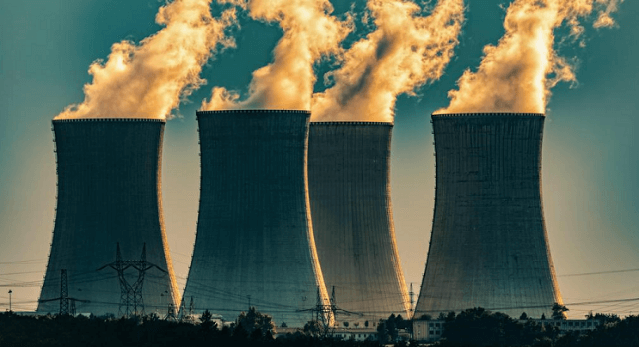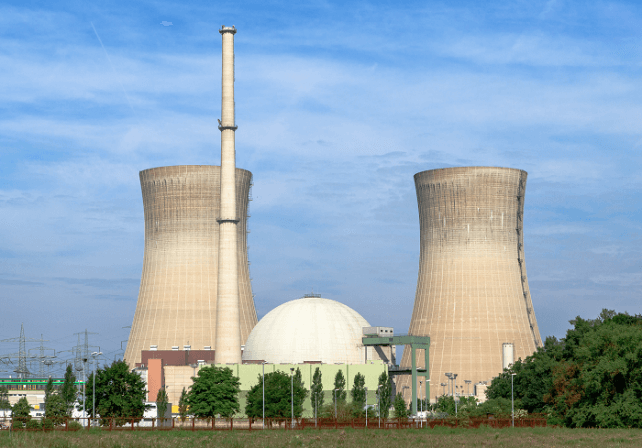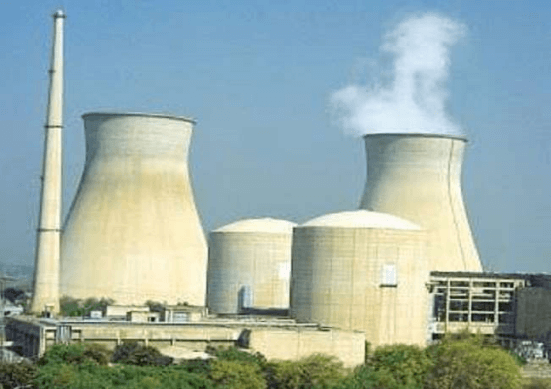Advantages and Disadvantages of Nuclear EnergySince the first nuclear power plant was inaugurated in the 1950s, the world has been divided over nuclear power as an energy source. While it's a healthier alternative to the fossil-fuels, this kind of power source is also linked to some of the most deadly and dangerous weapons, not forgetting its ability to cause nuclear catastrophes. The enormous cost and long process of building nuclear plants are offset by the fact that nuclear energy production is not as polluting as oil or coal. In the quest to achieve net zero CO2 emissions, can nations remain dependent on nuclear power, or should they look to make room to expand their use of fossil fuels as well as other renewable sources of energy? We examine the benefits and drawbacks of nuclear power. 
What is Nuclear Energy?Source of nuclear energy can be described as the source of energy that is found in the nucleus of an atom or the core of an element. After extraction, it can be utilized to generate electricity by generating nuclear fission through two-way reactions that are nuclear fusion and fission. When the latter happens process, the use of uranium as a fuel causes atoms in two nuclei or greater to split. The energy released by fission produces heat, which causes a cooling agent, usually water, to boil. The steam that is emitted from water that is boiling or pressurized is channeled through turbines that generate electricity. For nuclear fission to be produced, reactors use uranium as fuel. Over the centuries, the development of the world's economies has been possible through fossil fuels such as natural gas, coal, and petroleum. However, recently, nations have opened their doors to renewable energy sources of energy like wind and solar energy. In the 1950s, the first commercial nuclear power stations began operations, providing countries in the world with an alternative to gas and oil import dependency and a more environmentally friendly alternative to fossil fuels as an energy source. After the energy crisis of the 1970s and the significant rise in the price of oil that followed it, many nations decided to launch nuclear power projects. Most nuclear reactors were built from 1970 to 1985 across the globe. Nuclear energy today can meet about 10% of the global energy requirements, and there are 439 operational nuclear power plants across 32 countries and around 55 reactors in construction. In 2020, 13 nations generated at least one-quarter of their electricity using nuclear energy, while three countries: the US, China, and France, led the market. The advantages and disadvantages of nuclear energyFossil fuels comprise 60% of the United States' electricity, while the remaining 40% is equally divided between nuclear power and renewable sources. France began a massive growth of its nuclear sector in the 1970s with the aim of reducing its dependence on foreign oil. By doing so, the country was able to boost its economy and reduce its carbon emissions to levels previously unimaginable. At present, France is home to 56 reactors operating and depends on nuclear power for 70 percent of its energy. The Advantages of Nuclear EnergyThere are many benefits of nuclear energy, in particular when you compare it to oil, coal, and other fossil fuels. In the end, nuclear energy is more efficient, cleaner, and much more affordable. If you look closer, you will discover the benefits of this energy source can be. Some of them are- 1. More efficient than fossil fuels Nuclear power is dependent on nuclear fission. It's a fundamental process that is self-sustaining. When plants are fueled using uranium, they can generate energy for an average of about 18 to 24 months before replenishing the fuel. Additionally, the rods that fuel it could last for up to six years. Furthermore, power plants that rely on fossil fuels need a constant fuel supply, raising the need for petroleum, gas, and coal. Furthermore, they require greater amounts of fuel than nuclear power plants to generate equivalent quantities of electricity. Therefore, nuclear is superior to fossil fuels both in effectiveness and efficiency. It could also last up to six years if the fuel rods are kept in good condition. Power plants that depend on fossil fuels also need a constant fuel supply, increasing the demand for petroleum, gas, and coal. To generate equivalent amounts of electricity, they need more fuel than nuclear power stations. In terms of efficiency and effectiveness, nuclear fuels are superior to fossil fuels. 2. Greenhouse Gases Not Released The greatest advantage of nuclear energy is its inability to produce greenhouse gases. Instead, nuclear power plants emit harmless water vapor, which is infinitely more beneficial for humans and the environment. Current fossil fuel combustion is responsible for 74% of total GHG emissions and 92% of total anthropogenic carbon emissions in the United States. Nuclear provides a cleaner alternative to fossil fuels and the multitude of pollutants they create. 3. Low operating costs Nuclear power plants are much more affordable than those that use fossil fuels. This means that nuclear energy is more affordable to produce and use than fossil fuels, making it an attractive option for those who are willing to invest. It is easy to include nuclear in government spending budgets because operating costs include disposal and decommissioning. The cost of power is also reduced in this manner in the long term. Disadvantages Of Nuclear EnergyThere are some drawbacks to nuclear energy, despite its many benefits. Are the negatives more important than the positives? It all depends on the person you ask and whether they prefer to support the planet or short-term economic growth. 1. It is expensive to build While operating costs may be lower, the initial cost of building nuclear power plants is high. Why? While recent changes in rules and regulations have made plants more secure, they have also increased building costs. Standardized designs are not helping. Both fossil fuels and renewables are cheaper for the initial investment. 2. Construction of new power plants 
Stakeholders can find it difficult to build a nuclear power station. The infrastructure projects that are multi-billion dollar for conventional reactor designs include those with nuclear power plant designs. Public interest has been discouraged by high capital costs, lengthy lead times, and regulatory approvals. DOE is supporting the construction of two reactors at Plant Vogtle, Waynesboro (Georgia), as part of its efforts to rebuild its nuclear workforce. These units are the first new reactors in America to be constructed in over 30 years. When the new units go into operation in 2023, the expansion project will provide employment for 800 permanent workers and support up to 9000 workers during peak construction. DOE also supports the development of smaller reactor designs, such as microreactors or small modular reactors. This will allow customers greater flexibility in terms of size and power output. These factory-built systems will reduce construction times and make nuclear power less expensive to build and maintain. 1. Operating costs are high The nuclear industry is struggling to stay competitive in a market that has become increasingly challenging. The DOE's Light Water Reactor Sustainability program (LWRS) is working to overcome these challenges. It modernizes plant systems in order to lower operation and maintenance costs while increasing performance. The program supports the long-term operation and maintenance of the nation's reactor fleet. It also conducts materials research. To improve operational costs, DOE also works with the industry to develop accident-tolerant fuels. These fuels will improve plant performance and produce less waste. By 2025, fuels that are accident-tolerant could be widely used. 2. Limited fuel supply Experts predicted that the world's uranium supplies would last for 80 years at the current consumption rate eleven years ago. Uranium production has generally increased since then, meaning that nuclear energy is only a temporary solution. Humans will be forced to switch to renewable energy if they can't create nuclear fusion or build breeder reactors. 3. Produces radioactive waste Although their overall pollution output is very low, radioactive waste generated by nuclear plants is worth noting. After the reactor rods have run out of fuel, they become physically hot for around ten years and then dangerously radioactive for an additional 10,000. Many countries have decided to bury the rods underground, where they are less likely to contaminate the environment. Accidents do happen, and radioactive waste has been known to leak from or evaporate from storage tanks in the past. It can be very hazardous to the environment and human life itself. Nuclear power plants in IndiaAs part of its infrastructure development program, the Government of India has committed to increasing India's nuclear power capability. The Centre has set ambitious goals for the next few years. India is exempted from the Nuclear Non-Proliferation Treaty because of its weapons program. It was also largely excluded for 34 years from trade in nukes and materials, which had a negative impact on its development of civil nuclear power until 2009. Incompatibility between India's civil liability law, and international conventions, has also limited foreign technology for nuclear research since 2010. After a waiver by the 48-nation Nuclear Supplier Group (NSG), on 6 September 2008, India was granted civilian nuclear technology and fuel from other nations. The top 7 Nuclear Power Plants in India are- 1. Kudankulam Nuclear Power Plant, Tamil Nadu The Kudankulam Nuclear Power Plant can be found in Southern India's Tamil Nadu. With a capacity of 2,000MW installed and another 2,000MW in construction, it is India's largest nuclear power plant. Kudankulam is India's only nuclear plant that uses pressurized water reactors instead of boiling water reactors or pressurized heavy water reactors. The PWRs were built using Russian technology and supplied by Atomstroyexport. After protests led by The People's Movement against Nuclear Energy (following Fukushima), construction was stopped on the project in October 2011. In May 2013, the Indian Supreme Court rejected the public suit by the protestor against the plant. 2. Maharashtra, Tarapur Nuclear Reactor The Tarapur Nuclear Reactor, Maharashtra, Western India, is the oldest known nuclear facility in India. It was commercially operationalized in 1969. It is the second-most powerful reactor in India. There are two BHWR reactors with 160MW each and two PHWR reactors with 540MW. This totals 1,400MW. Two BHWRs were installed in 1969. The two PHWR reactors were added in 2005 and 2006. 3. Rajasthan Atomic Power Plant, Rajasthan The total installed power of the Rajasthan Power Plant, Rajasthan, North-Western India, is 1180MW. The first reactor, which was a combination of six PHWR reactors and two additional reactors, was commissioned in December 1973. In June 2012, protestors from the local chapter of the ruling Indian People's Party BJP (BJP) made the plant their target. In June 2012, protestors from the local chapter of the ruling Indian People's Party (BJP) called for a "bandh" - a similar strike-like protest and organized a rally against the plant. This led to mass arrests. 4. Kaiga Atomic Power Plant, Karnataka Kaiga Atomic Power Plant, Karanataka, in Western India, is made up of four 220MW PHWR nuclear reactors. It has a total capacity of 880MW. They became operational in December 1999 and October 2000, April 2007, 2007, and January 2011. In December 2018, Unit 1 of Kaiga's Kaiga plant set the record for the longest continuous operation. It operated continuously for 962 consecutive days, surpassing Heysham 2's previous record of 22 days. 5. Kalapakkam Nuclear Power Plant, Tamil Nadu Kalapakkam Nuclear Power Plant, Tamil Nadu, was first operational in 1984. It currently has two reactors with 235MW each. Two more reactors of 500MW or 600MW are planned for later. Kalapakkam's prototype fast breeder reactor, PFBR (Prototype Fast Breeder Reactor), can produce 70% more energy and does not produce radioactive nuclear waste. The reactor could withstand the Vardah Cyclone, which brought winds up to 90 mph to Tamil Nadu in December 2016. 6. Narora Nuclear Reactor, Uttar Pradesh 
Two PHWRs are available at the Narora Nuclear Reactor, Uttar Pradesh, Northern India. They have a combined capacity of 440MW. Unit 1 was completed in January 1991, and unit 2 in July 1992. Despite a major fire in unit 1 in 1995 and unit 2 being shut down for a month in September 1999 due to an inner door malfunction, Narora is still considered one of the safest nuclear power plants in the country. In 2000, it was given the Golden Peacock award for environmental management. 7. Kakarapar Atomic Power Plant, Gujarat The Kakarapar Atomic Power Plant in Gujarat, Western India, has two PHWR reactors with an installed capacity of 444MW. Two reactors were built in the months of May 1993 and September 1995, respectively. The plant was closed for 66 days in 1998 because of water leaks in its system. However, it recovered from being voted the top PHWR within its category by the Candu owners group in January 2003. The plant also underwent an effective 'heart transplant' in September 2018, when all its coolant channels and feeder tubes located at the heart of its plant were changed. Achieving a Sustainable FutureThe landscape of nuclear power is changing daily, with several nations planning to construct many nuclear power plants over the coming years. Due to its environmental stewardship, efficiency, and affordability, nuclear power can play a significant role in the transition toward renewable energy. However, as the cost of building nuclear power plants is high, as well as they produce toxic waste and eventually exhaust their fuel, they will not be able to offer a sustainable solution to the world's energy needs as well as the global climate catastrophe. In the quest for a more sustainable future, nuclear energy will definitely serve as a stepping stone to a new path. It's just a matter of how long until the phase-out process starts and renewable energy takes its place in the center.
Next TopicAdvantages and Disadvantages of Nylon
|
 For Videos Join Our Youtube Channel: Join Now
For Videos Join Our Youtube Channel: Join Now
Feedback
- Send your Feedback to [email protected]
Help Others, Please Share










